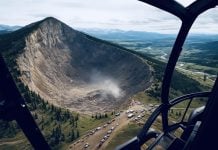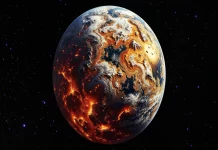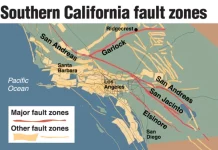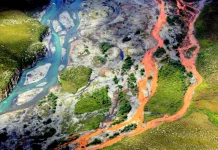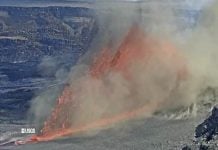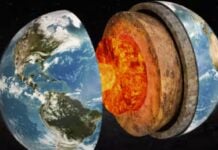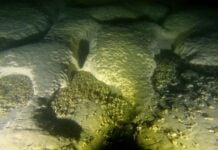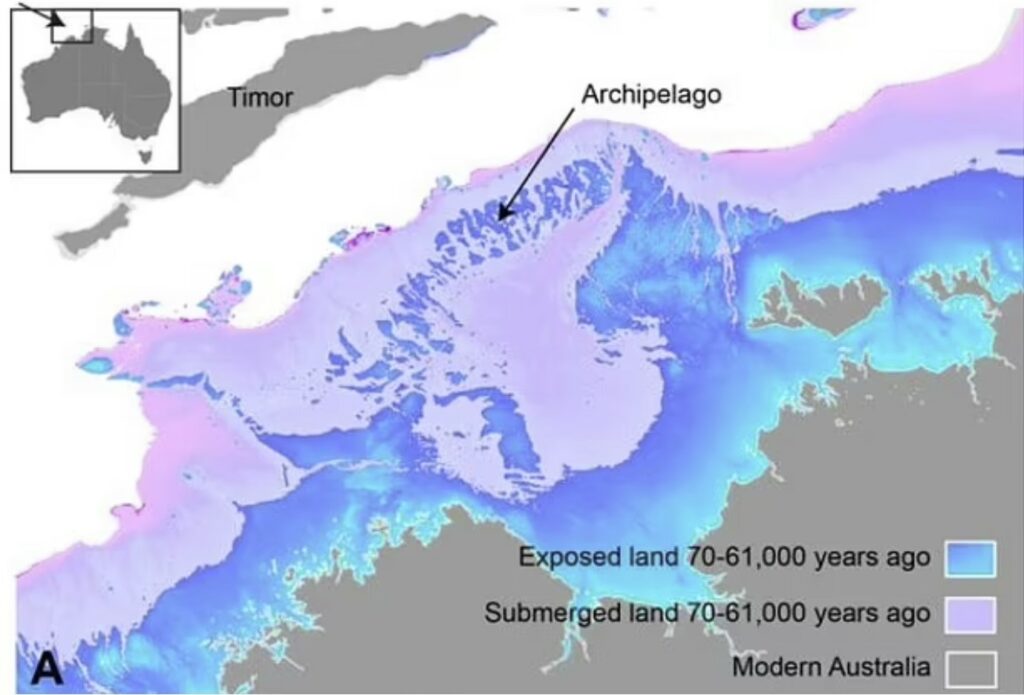
In the distant past, rising sea levels have hidden vast portions of our planet’s land that humans once called home.
Now, scientists have found evidence of a lost continent off Australia’s northern coast that was home to half a million people around 70,000 years ago.
This landmass, known as the North West Shelf, was around 1.6 times as large as the UK and contained archipelagos, lakes, rivers and a large inland sea.
The archipelagos were so large they could have acted as ‘stepping stones’ for migration from Indonesia into Australia, the experts say.
Sadly, the North West Shelf was lost around 10,000 years ago when sea levels rose, and is now around 300 feet underwater in the Timor Sea.
The new study was led by Kasih Norman, an archaeologist at Griffith University in Queensland.
‘We reveal details of the complex landscape that existed on the North West Shelf of Australia,’ Norman and colleagues say.
‘It was unlike any landscape found on our continent today.’
Around 18,000 years ago, the last ice age came to an end.
Subsequent warming caused sea levels to rise and drown huge areas of the world’s continents, including a huge landmass that went around Australia.
This landmass connected the Australian mainland with New Guinea and Tasmania – collectively now known as Sahul – but when the rise in sea levels occurred, parts flooded.
This process split the supercontinent of Sahul into New Guinea and Australia, and cut Tasmania off from the mainland.
Sahul’s North West Shelf in particular was a ‘vast, habitable realm’ and a ‘single cultural zone’ with similarities in ground stone-axe technology, styles of rock art and languages, the experts say.
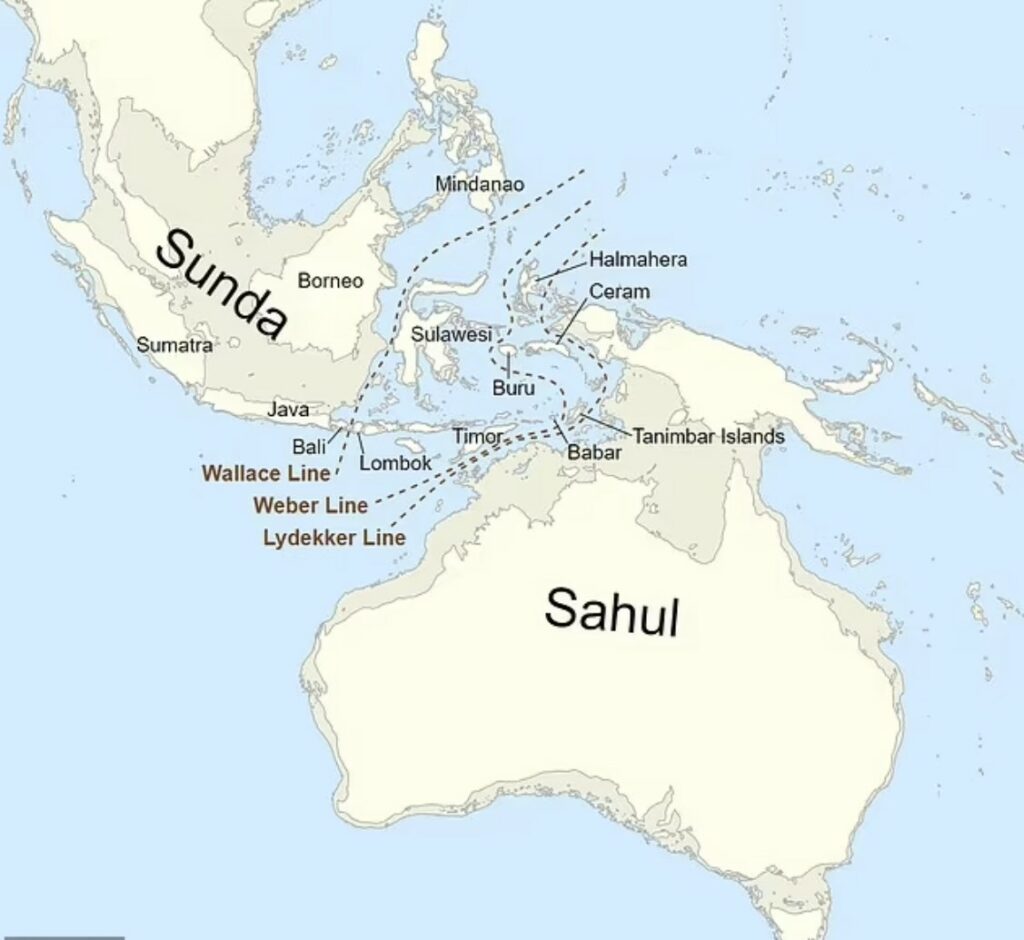
For the study, they analysed bathymetric data – information about the depths and shapes of underwater terrain – in the North West Shelf region.
They also looked at historic sea level data to help estimate when the region was populated and when it was lost.
Rapid global sea level rises between 14,500 to 14,100 years ago and 12,000 to 9,000 years ago resulted in the rapid inundation of about half of the North West Shelf with seawater, they reveal.
Human populations would have witnessed an ‘encroaching coastline’ and retreated further into the Australian mainland.
This resulted in an increase in populations at the Kimberley and Arnhem regions of northern Australia, evident in distinctive new rock art styles in both regions.
The team also pointed to stone tools recently found on the sea floor off the coast of the Pilbara region of Western Australia.
The now-drowned continental shelves of Australia were thought to be little-used by Indigenous people, but the new study suggests this is not the case.
If they were anything like North West Shelf, they were ‘rich ecosystems’ with impressive populations similar to today’s towns and cities.
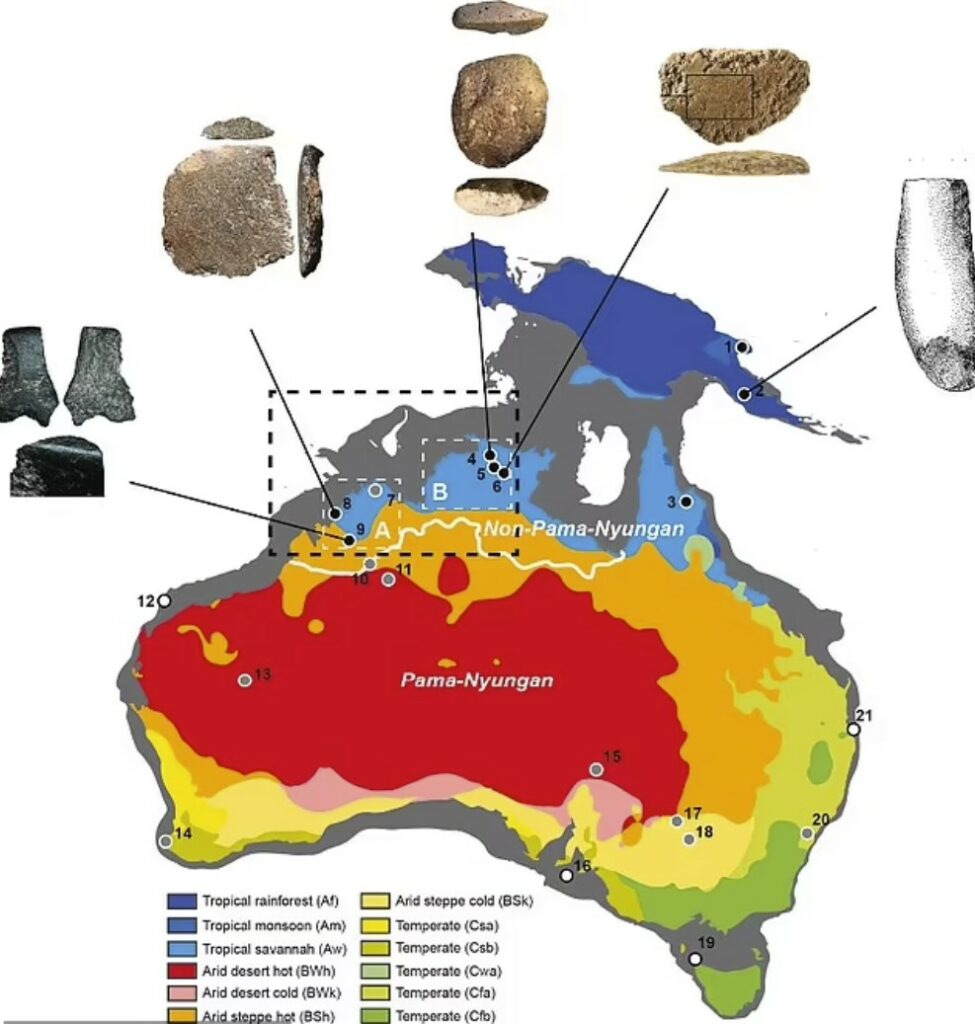
‘Our ecological modelling reveals the now-drowned North West Shelf could have supported between 50,000 and 500,000 people at various times over the last 65,000 years,’ the team say.
‘The population would have peaked at the height of the last ice age about 20,000 years ago, when the entire shelf was dry land.
‘Many large islands off Australia’s coast – islands that once formed part of the continental shelves – show signs of occupation before sea levels rose.’
The study has been published study in Quaternary Science Reviews.
Hey friends, it’s time to wake up!
If a few more people choose to support my work, I could expose more lies, root out more corruption, and call out more hypocrites. So, if you can afford it, please support my endeavor by either using PAYPAL or the DonorBox below (PAYPAL & Credit Cards / Debit Cards accepted)…
If you are a crypto fanatic, I do now accept crypto donations:
BTC: 1AjhUJM6cy8yr2UrT67iGYWLQNmhr3cHef (Network: Bitcoin) USDT: 0x490fe5d79d044a11c66c013e5b71305af0a76c1b (Network: Etherum ERC20)
You should join my newsletter to get a daily compilation of different breaking news, pictures and videos… YOU WILL LOVE IT!
Thank you,
Manuel


